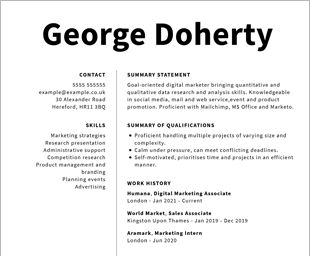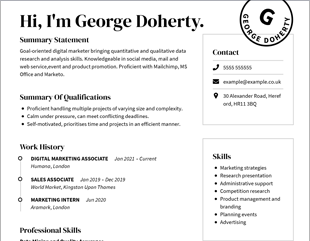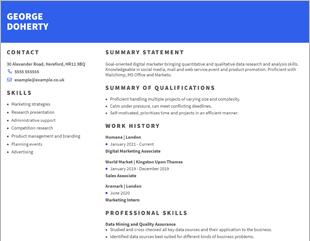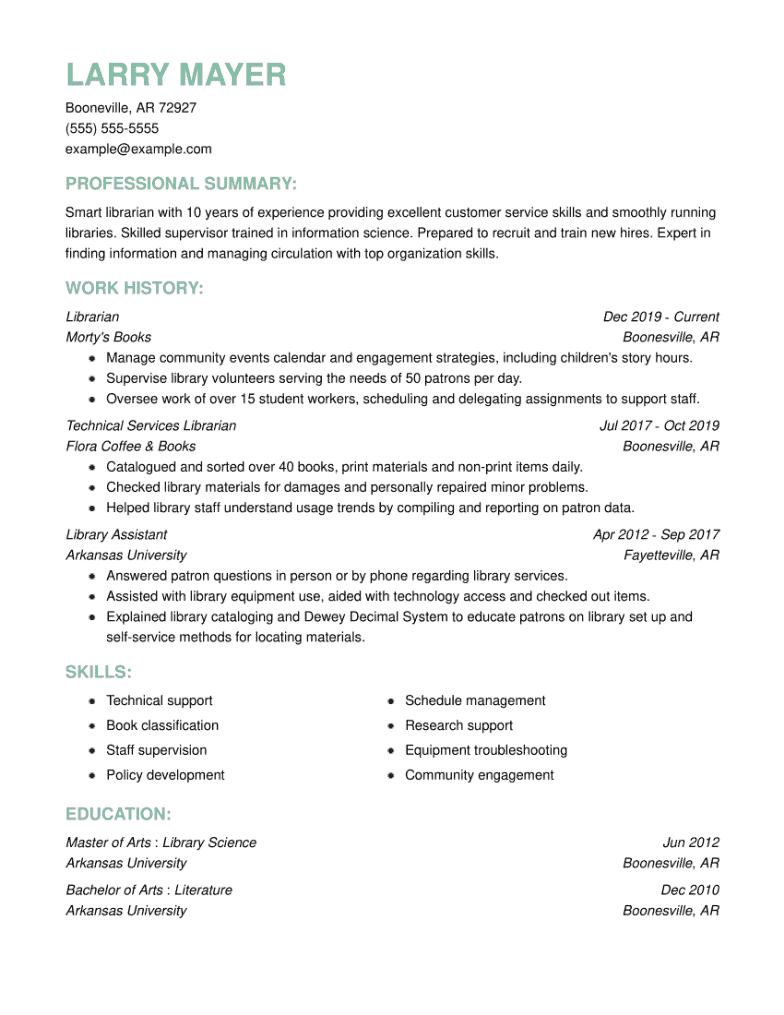Writing a Reverse-chronological CV This Year
A reverse-chronological CV is often the best way to display your career achievements and skills. What do you need to know about this CV format?
A reverse-chronological CV is often the best way to display your career achievements and skills. What do you need to know about this CV format?





OUR USERS HAVE BEEN HIRED BY

A reverse-chronological CV is a CV format that prioritises professional experience and previous jobs. As the name suggests, this CV layout involves detailing previous work experience in reverse-chronological order, with the most recent job being located at the top of the work history section. This CV format is most beneficial for job seekers who have a lot of professional experience and want to showcase this to potential employers. By contrast, the reverse-chronological CV is less beneficial for those who lack work experience or have many gaps in their work history.
The major sections of a reverse-chronological CV are the same as other CV formats, but the importance of each section is different. For example, in a reverse-chronological format, the work experience section will be more extensive than the education and skills sections.
Your CV header should include your full name and your contact information. You can also include your professional social media profiles for platforms such as LinkedIn.
Your CV summary should be a very short introduction to who you are as a person and what you can bring to the table. If you lack professional experience, you can instead write a CV objective statement.
This is where you should list all relevant technical skills, soft skills and certifications. The skills section of your chronological CV should be fairly compact in size, so be sure to prioritize your most relevant skills and qualifications.
The largest part of a reverse-chronological CV is the professional experience section. This section should cover the last 10 to 15 years of your work experience. List previous job titles in full and detail your biggest achievements within those roles.
If you have been out of education for over five years, your education section will have limited importance (especially if you have a wealth of professional experience). List your most recent or most advanced educational achievements unless older qualifications are more relevant to the role you are applying for.
If you need some inspiration to help you create the best possible reverse-chronological CV, the CVHelp CV builder can be a helpful tool. There are other CV formats you can consider for your professional CV, so take the time to look at your options before you commit to a reverse-chronological CV format.
There are other CV formats that can be useful to those who have gaps in their work experience or who lack professional experience as recent graduates or job seekers who are undertaking a job search as a part of a career change. The main features of each type of CV are:
As already stated, a reverse-chronological CV prioritizes work history. If you’re applying for a job that values experience, use this format to present your work history and impress the hiring manager.
A functional CV format is best for those with limited work experience or large employment gaps because it prioritizes relevant skills and achievements while downplaying work history. Make use of bullet points and break out your skills into categories to make your skills section stand out.
A hybrid or combination CV format features substantial skills work experience sections and is a good middle ground between the two other formats. Focus on the biggest achievements at present and previous jobs, as well as skills that are relevant to the job you want.
If you wish to impress recruiters and secure a new job, you should choose the right CV format to complement your skills and work history. Consider whether you have employment gaps, your most relevant skills and certifications, and different CV templates before you continue and look at effective CV examples from your field of work to get inspiration.
The reverse-chronological CV is one of the most versatile and adaptable CV layouts, but it will benefit those who have a lot of work experience. Every CV format has its particular benefits, but the chronological CV format has something to offer most career paths.
Yes, depending on your particular skill set and level of work experience you could add a section for your certifications or internships. Your CV is all about representing the things that make you the best candidate for a job, which means it is adaptable.
Generally speaking, you should only include 10 to 15 years of work experience in your reverse-chronological CV unless the company specifically asks for more.
We personalize your experience.
We use cookies in our website to ensure we give you the best experience, get to know our users and deliver better marketing. For this purpose, we may share the information collected with third parties. By clicking “Allow cookies” you give us your consent to use all cookies. If you prefer to manage your cookies click on the “Manage cookies” link below.